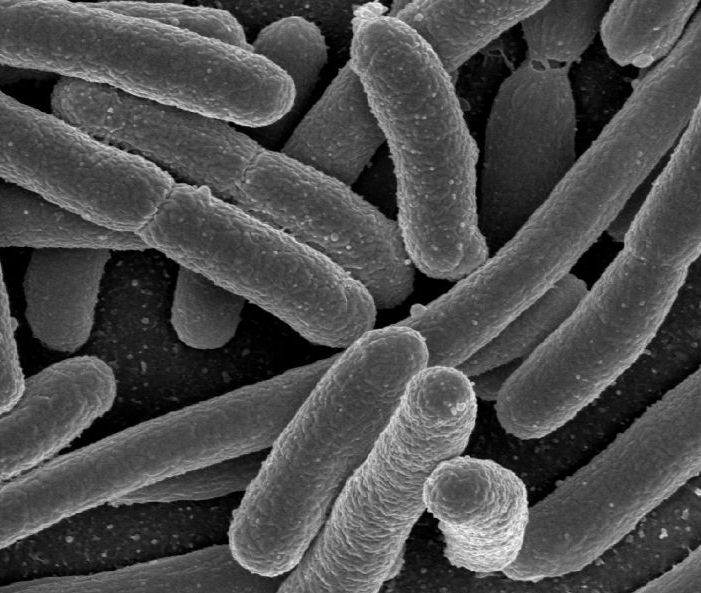Team:DTU-Denmark/Vision
From 2011.igem.org
Alewinska88 (Talk | contribs) (→The idea) |
(→Examples of application) |
||
| (72 intermediate revisions not shown) | |||
| Line 1: | Line 1: | ||
{{:Team:DTU-Denmark/Templates/Standard_page_begin|Vision}} | {{:Team:DTU-Denmark/Templates/Standard_page_begin|Vision}} | ||
| - | == | + | == Unsolved problems in biology == |
| - | + | ||
| - | Gene silencing in bacteria is fundamental to basic and applied research. Gene knockouts are widely used to investigate gene function, but | + | [[File:DTU_Bacteria.jpg|175px|right]] |
| + | '''Problem 1''': Gene silencing in bacteria is fundamental to basic and applied research. '''Gene knockouts''' are widely used to investigate gene function, but have severe limitations. Gene knockout requires technology which is only developed for a handful of organisms and can only be used to study non-essential genes. Following the explosion of known bacterial species new paradigms for research on genes are needed. | ||
| - | |||
| - | |||
| - | + | '''Problem 2''': In bioengineering gene expression is often regulated by '''inducible promoters''', but there exist only a few good inducible promoters. Most of these promoters are leaky, they express genes in the ''off'' state, and laborious chromosomal engineering is needed to place a promoter in front of natural genes. | |
| - | + | == The idea == | |
| - | + | ||
| - | + | ||
| - | + | ||
| - | == | + | |
| - | + | ||
| - | + | ||
| - | + | ||
| - | + | ||
| - | + | Gene silencing and induction could be improved by developing a system inspired by chitobiose regulation in ''E. coli''. The system provides an '''engineering framework''' for gene silencing by utilizing trans-acting RNA regulation. | |
| - | |||
| - | The | + | Chitobiose regulation contains unique and very interesting features. '''A small RNA''' regulates gene expression analogously to the highly versatile miRNAs of eukaryotes. The RNA selectively aims and facilitates the degradation of the mRNA of a target gene. The short complementary sequence entails the specificity which theoretically enables genetically engineering of the system to target any gene. |
| - | |||
| - | + | [[File:swiss_army_knife.jpg|300px|left|middle|]] | |
| + | In addition, the chitobiose regulations system contains a '''second small RNA''' that regulates the first, enabling highly advanced schemes of regulation such as pulses. Having two small RNA components significantly increases the options to fine-tune an control gene expression. In conclusion the system has the potential to be a universal tool for easy and specific gene silencing. | ||
| - | |||
| - | |||
| - | |||
| - | |||
| - | |||
| - | |||
| - | |||
| + | == Advantages == | ||
| - | + | The proposed system could be superior to commonly used solutions for gene silencing by being '''easy to use'''. The system can simply be designed ''in silico'', synthesized and transformed into cells, to silence any gene of interest. | |
| - | + | ||
| - | |||
| - | |||
| - | + | Another advantage is increased '''area of applicability'''. Any organism that is sequenced, contains Hfq, is transformable and have known stable plasmids can be subject to gene silencing. A criteria which is satisfied for most bacteria. | |
| - | + | ||
| - | |||
| - | + | [[File:DTU_On-off-switch.jpg|300px|right]] | |
| + | The proposed system is complementary to promoter based regulation and multiple systems can coexists without interfering. Thus the system provides a high degree of '''flexibility''' in designing experiments as well as biological circuits. | ||
| - | |||
| - | + | The two small RNA components of the system potentially provides the ability to fine-tune gene expression levels, because the natural system indicates a large dynamic range. Thus the proposed system could provide explicit '''control''' of gene expression over a large dynamic range. | |
| - | + | == Examples of application == | |
| + | '''Application 1''': Knocking down essential genes is difficult since they are needed for cells to survive. Using repressible promoters conditional knockout can be achieved, but this requires chromosomal engineering and the strains are no longer wild type. By placing the reengineered two-component small RNA system under the control of inducible promoters, conditional and controllable silencing of any gene could be achieved. | ||
| - | |||
| - | |||
| - | + | '''Application 2''': When using bacteria for industrial bioproduction, the product are often detrimental to the bacteria. To increase productivity the bacteria is grown without expression and then induced suffocating in their own product. The approach introduces a tradeoff between low expression in ''off'' state and high expression in the ''on'' state. By being complementary to existing regulation the proposed system allows tighter control of any inducible system, hence diminishing the tradeoff and increasing productivity. | |
| - | |||
| - | + | '''Application 3''': The ease of use could enable library based high throughout experiments of gene silencing. Rational design of biological circuits are often difficult and the right expression level of each component almost impossible to predict. Using the proposed system it could be possible to trouble-shoot designs of synthetic biology by quickly screening levels of gene expression. With our tool it might even be possible to target a single gene in an operon. | |
| - | |||
{{:Team:DTU-Denmark/Templates/Standard_page_end}} | {{:Team:DTU-Denmark/Templates/Standard_page_end}} | ||
Latest revision as of 04:05, 22 September 2011
Vision
Contents |
Unsolved problems in biology
Problem 1: Gene silencing in bacteria is fundamental to basic and applied research. Gene knockouts are widely used to investigate gene function, but have severe limitations. Gene knockout requires technology which is only developed for a handful of organisms and can only be used to study non-essential genes. Following the explosion of known bacterial species new paradigms for research on genes are needed.
Problem 2: In bioengineering gene expression is often regulated by inducible promoters, but there exist only a few good inducible promoters. Most of these promoters are leaky, they express genes in the off state, and laborious chromosomal engineering is needed to place a promoter in front of natural genes.
The idea
Gene silencing and induction could be improved by developing a system inspired by chitobiose regulation in E. coli. The system provides an engineering framework for gene silencing by utilizing trans-acting RNA regulation.
Chitobiose regulation contains unique and very interesting features. A small RNA regulates gene expression analogously to the highly versatile miRNAs of eukaryotes. The RNA selectively aims and facilitates the degradation of the mRNA of a target gene. The short complementary sequence entails the specificity which theoretically enables genetically engineering of the system to target any gene.
In addition, the chitobiose regulations system contains a second small RNA that regulates the first, enabling highly advanced schemes of regulation such as pulses. Having two small RNA components significantly increases the options to fine-tune an control gene expression. In conclusion the system has the potential to be a universal tool for easy and specific gene silencing.
Advantages
The proposed system could be superior to commonly used solutions for gene silencing by being easy to use. The system can simply be designed in silico, synthesized and transformed into cells, to silence any gene of interest.
Another advantage is increased area of applicability. Any organism that is sequenced, contains Hfq, is transformable and have known stable plasmids can be subject to gene silencing. A criteria which is satisfied for most bacteria.
The proposed system is complementary to promoter based regulation and multiple systems can coexists without interfering. Thus the system provides a high degree of flexibility in designing experiments as well as biological circuits.
The two small RNA components of the system potentially provides the ability to fine-tune gene expression levels, because the natural system indicates a large dynamic range. Thus the proposed system could provide explicit control of gene expression over a large dynamic range.
Examples of application
Application 1: Knocking down essential genes is difficult since they are needed for cells to survive. Using repressible promoters conditional knockout can be achieved, but this requires chromosomal engineering and the strains are no longer wild type. By placing the reengineered two-component small RNA system under the control of inducible promoters, conditional and controllable silencing of any gene could be achieved.
Application 2: When using bacteria for industrial bioproduction, the product are often detrimental to the bacteria. To increase productivity the bacteria is grown without expression and then induced suffocating in their own product. The approach introduces a tradeoff between low expression in off state and high expression in the on state. By being complementary to existing regulation the proposed system allows tighter control of any inducible system, hence diminishing the tradeoff and increasing productivity.
Application 3: The ease of use could enable library based high throughout experiments of gene silencing. Rational design of biological circuits are often difficult and the right expression level of each component almost impossible to predict. Using the proposed system it could be possible to trouble-shoot designs of synthetic biology by quickly screening levels of gene expression. With our tool it might even be possible to target a single gene in an operon.
 "
"











